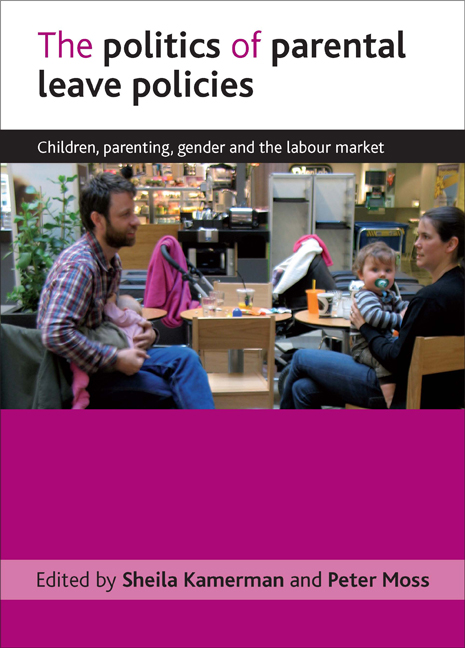Book contents
- Frontmatter
- Contents
- List of tables and figures
- Acknowledgements
- Notes on contributors
- one Introduction
- two Australia: the difficult birth of paid maternity leave
- three Canada and Québec: two policies, one country
- four Czech Republic: normative or choice-oriented system?
- five Estonia: halfway from the Soviet Union to the Nordic countries
- six Finland: negotiating tripartite compromises
- seven France: gender equality a pipe dream?
- eight Germany: taking a Nordic turn?
- nine Hungary and Slovenia: long leave or short?
- ten Iceland: from reluctance to fast-track engineering
- eleven The Netherlands: bridging labour and care
- twelve Norway: the making of the father’s quota
- thirteen Portugal and Spain: two pathways in Southern Europe
- fourteen Sweden: individualisation or free choice in parental leave?
- fifteen The European directive: making supra-national parental leave policy
- sixteen Conclusion
- Appendix
- Index
twelve - Norway: the making of the father’s quota
Published online by Cambridge University Press: 05 July 2022
- Frontmatter
- Contents
- List of tables and figures
- Acknowledgements
- Notes on contributors
- one Introduction
- two Australia: the difficult birth of paid maternity leave
- three Canada and Québec: two policies, one country
- four Czech Republic: normative or choice-oriented system?
- five Estonia: halfway from the Soviet Union to the Nordic countries
- six Finland: negotiating tripartite compromises
- seven France: gender equality a pipe dream?
- eight Germany: taking a Nordic turn?
- nine Hungary and Slovenia: long leave or short?
- ten Iceland: from reluctance to fast-track engineering
- eleven The Netherlands: bridging labour and care
- twelve Norway: the making of the father’s quota
- thirteen Portugal and Spain: two pathways in Southern Europe
- fourteen Sweden: individualisation or free choice in parental leave?
- fifteen The European directive: making supra-national parental leave policy
- sixteen Conclusion
- Appendix
- Index
Summary
Maternity leave: there is no separate maternity leave except for pregnant women who must stop work because of chemical, biological or physical hazards (‘pregnancy leave’). Part of parental leave is reserved for women.
Paternity leave: 2 weeks. Any payment is made by employers and depends on collective bargaining.
Parental leave: 44 weeks at 100% of earnings or 54 weeks at 80% up to a ceiling of 6 times the basic national insurance benefit payment, NOK421,536 (€48,455). Nine weeks are reserved for mothers and 6 weeks are for fathers (fedrekvoten or ‘father's quota’). The remaining period is a family entitlement and may be taken by either mother or father.
Leave to care for sick children: up to 10 days per year per parent with one or two children under 12 years at 100% of earnings up to a ceiling of NOK421,536; 15 days if more than two children.
Other: each parent has the right to one year of unpaid leave after parental leave.
Parents with a child aged 12–36 months are entitled to receive a cash benefit on condition that they do not use a full-time place in a publicly funded childcare centre. In 2008, the benefit was NOK3,303 (€380) per child per month.
Norway is a Nordic country, but not a member state of the European Union. It does not have a separate system of maternity leave; part of parental leave is reserved for mothers and a shorter period for fathers. Prior to the introduction of the father's quota, less than 4% of fathers took some parental leave; latest figures show that 89% now take leave, with 70% taking more than 5 weeks. It is most common for parents to choose the option of longer leave with reduced payment.
There is an entitlement to early childhood education and care (ECEC) for children from 12 months of age.
Introduction
Norway was the first country to reserve part of paid parental leave for fathers, making it a leader in parental leave policies and fathers’ rights. Gender-neutral parental leave had been available for fathers from the 1970s, but few had taken up this opportunity to share parental leave with the mother. The father's quota, introduced in 1993, gave fathers an exclusive right to 4 weeks of parental leave, which in principle could not be transferred to the mother.
- Type
- Chapter
- Information
- The Politics of Parental Leave PoliciesChildren, Parenting, Gender and the Labour Market, pp. 191 - 206Publisher: Bristol University PressPrint publication year: 2009
- 3
- Cited by



